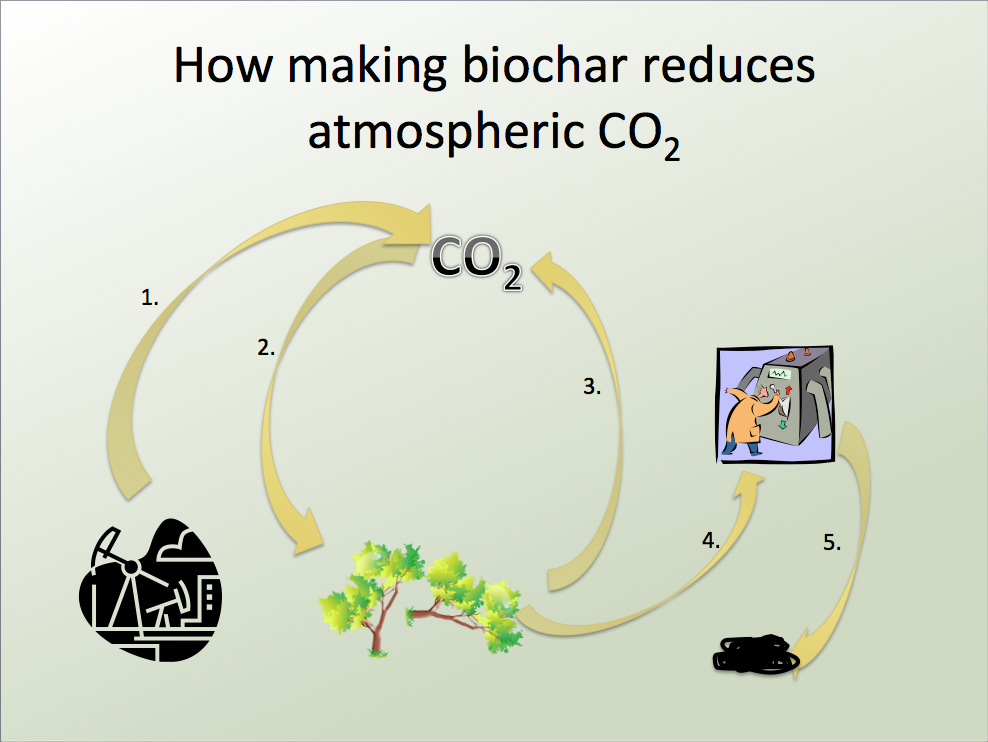Biochar is more commonly referred to as charcoal. It is produced by heating biomass (such as wood chips) in a low oxygen atmosphere (pyrolysis). Biochar has significantly different, and potentially more valuable, properties than the source biomass. One key difference is the nature of the carbon in the biochar. Biochar not only has a higher carbon content by weight than the biomass; moreover, it is structurally different such that it is recalcitrant to further reactions.
Before and after: Biomass (left) and Biochar (right)
Benefits
There are several benefits to biochar production:
- Climate change mitigation: biochar can be used to remove and sequester carbon from the atmosphere.
- Beneficial agronomic properties: it can change soil pH, retain nutrients, hold water, and enhance microbial activity.
- Renewable energy product: the biochar is an energy rich solid, similar to high quality coal.
How biochar production reduces atmospheric CO2
- Extracting fossil fuel from the earth and burning it puts CO2 into the air.
- Growing biomass pulls CO2 from the air and incorporates it into itself.
- When the plants die, they decompose and the CO2 returns to the atmosphere.
- As an alternative to decomposition, the biomass is pyrolyzed.
- The biochar does not decompose and so stays out of the atmosphere.

